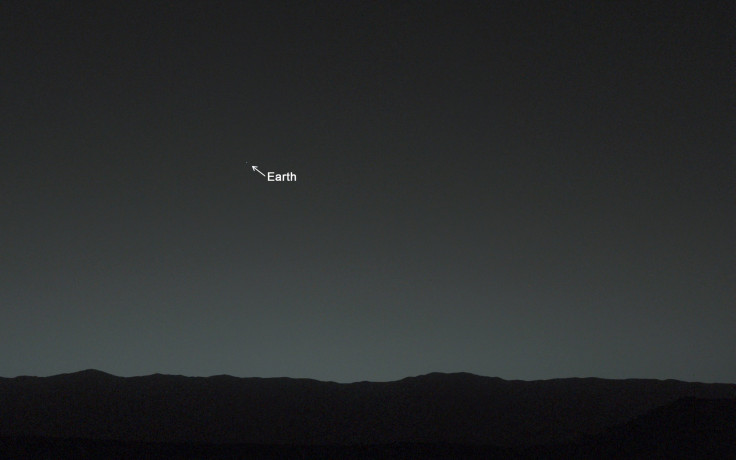When Earth Becomes An ‘Evening Star:' Curiosity Snaps Earth And Moon In The Martian Twilight Sky

NASA, on Thursday, released new images from its Curiosity Mars rover, showing Earth as a bright “Evening Star” in the Martian night sky.
The images, which also include Earth's moon, were taken approximately 80 minutes after sunset during Curiosity’s 529th Martian day, which was Jan. 31 in Earth's chronology. The distance between Earth and Mars when Curiosity took the images was about 99 million miles.
“A human observer with normal vision, if standing on Mars, could easily see Earth and the moon as two distinct, bright ‘evening stars,’” NASA said in a statement.

The two bodies, in the image above of an evening sky from Curiosity, are Earth and the moon. The body in the upper half of the image is Earth, shining brighter than any star in the Martian night sky. In the lower half of the image is Earth's moon, with its brightness enhanced to aid visibility. Researchers used the left eye camera of Curiosity's Mast Camera, or Mastcam, to capture the image, which has been processed to remove effects of cosmic rays.
NASA spacecraft that have previously returned images of Earth taken from Mars orbit or from the surface of Mars include Mars Global Surveyor in 2003, Mars Exploration Rover Spirit in 2004 and Mars Reconnaissance Orbiter in 2007.
Ever since Curiosity landed on Mars in August 2012 with 17 cameras and other scientific instruments, the rover has transmitted many images from the red planet. But, none of them have showed Earth itself, CNN reported.
“Look Back in Wonder,” a post on the Curiosity Rover's official Twitter feed read. “My 1st picture of Earth from the surface of Mars.”
Although the primary focus of the Curiosity rover is to examine the Martian soil, the controllers of the rover will also keep an eye on the sky to observe the passing of the comet Siding Spring on Oct. 19.
According to scientists, a spacecraft on Mars might get a good look at the nucleus of the comet as it heads toward its closest approach, approximately 86,000 miles, from the planet.
© Copyright IBTimes 2025. All rights reserved.





















